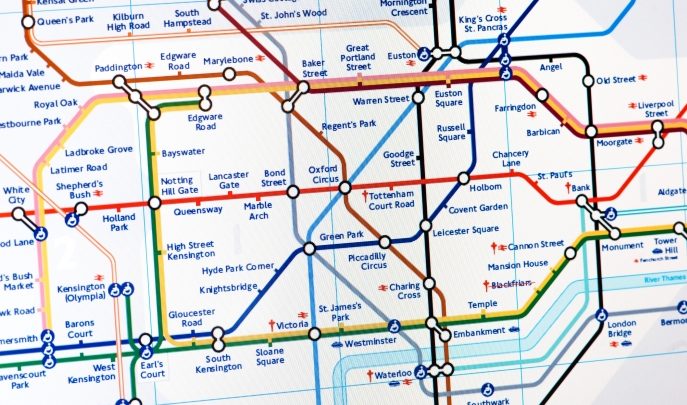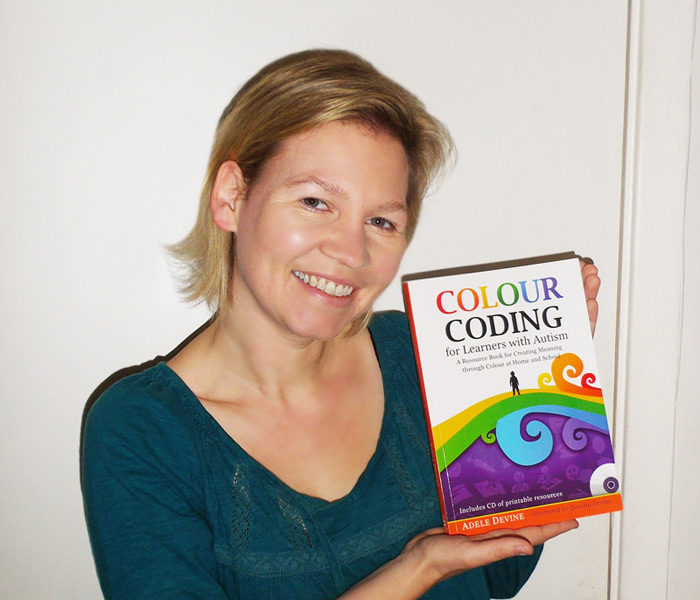Want To Make Your Lessons More Inclusive? Learn From The Tube

We can learn a lot about how to include pupils with SEND by taking a ride on the Tube, suggests Adele Devine…

- by Adele Devine
- Early years and SEN specialist, author, keynote speaker and trainer Visit website

You’re about to get on a jam-packed underground train at rush hour. It’s a hot, sweaty midsummer morning and you really need to be on that train.
Imagine the people squashed too close together, the smells, the ground wobbling, those feelings of vulnerability you might experience as the doors slide shut. Hopefully you’ll know where you’re going, how long the journey will last and have a way of counting down the stops. You might have a supportive friend to talk to, or a mobile phone to distract you.
To our SEND students, a normal school day can be as overwhelming and sometimes distressing as an underground train during rush hour. They may experience sensory issues that amplify sounds or find touch intolerable. The school setting itself might cause them to panic, to the point where their fight or flight instincts ignite.
So let’s think about the measures that Transport for London has put in place to improve journeys for its passengers, and see whether any of those strategies can be applied in our schools…
Lesson 1 – Provide directions
The London Underground has a hugely diverse customer base. As a passenger, you’ll hear multiple languages and share carriage space with people of various learning abilities, differing physical abilities, ages and cultures.
Over the years, operators have devised clever ways of using colour coding and signage to simplify the information that passengers need to know and help people to navigate the system independently. With a similarly diverse population in our schools, we too must create visual signposts so that all students can find their way.
Lesson 2 – Prioritise safety
TfL oversees many systems that are designed to keep commuters safe. These include physical ticket barriers, regular voice announcements, having staff wear easily recognisable uniforms and having stations patrolled by transport police. Knowing that these systems are in place helps commuters feel more secure, and makes it more likely they will remain calm and continue to be regular public transport users.
Similarly, we have to ensure that our pupils know about the systems we have in place to ensure their safety at all times.
Lesson 3 – ‘Zoning out’
It’s common to see commuters engrossed in their book, tablet or smartphone. These distractions help make time seem to pass quicker, while enabling them to zone out from the boredom or anxiety their journey might otherwise involve. Imagine if a conductor came along and confiscated every passenger’s mobile device without warning – there would be uproar!
We must be respectful and give reasons when enforcing our rules regarding technology use – rules that should fair and clear to all. You might find that Carol Gray’s ‘Social Stories’ approach (see carolgraysocialstories. com) is helpful here.
Lesson 4 – Noise reduction
The speaker systems on trains aren’t used for playing music at loud volumes. You can typically put some distance between yourself and noisy fellow passengers, or simply opt to travel at quieter times. Closed doors between the carriages help to create smaller and quieter spaces.
Be aware that tolerance to sounds, touch and smells are individual. Provide your pupils with visual volume controls, or potentially headphones. Reduce talk and listen.
Lesson 5 – Seating or standing?
Even when there are seats free, some commuters will prefer to stand – perhaps because want to be near their luggage, be better prepared to make a quick exit, or simply because they’re more comfortable standing. They are allowed to choose, and this choice eases their journey.
Think of this when drawing up your seating plans. Involve your students – let them know that they too have a voice and a choice.
Lesson 6 – Timetables
Beyond the aforementioned maps and signage, Tube passengers receive constant visual reminders of where they are, and have several ways of navigating between stops. On the train, this information is broken down further to clearly show the stops of the line they’re travelling on overhead, where everyone can see it. We can apply this same idea in school by displaying class timetables on walls, and giving out portable individualised timetables. Use colour coded visuals so that pupils can find the information that’s most relevant to them more quickly.
Lesson 7 – Be Predictable
The more often passengers complete the same journey, the easier that journey will become and the fewer visual supports they’ll need. But what if they were to glance out the window and see an unfamiliar station name? This is why any re-routing is clearly announced, so that passengers don’t get anxious.
We can avoid similar feelings of panic arising in our students by being predictable and providing clear warnings if our original plan is going to veer off track.
Lesson 8 – ‘Mind the gap’
We hear this phrase announced so often we might wonder why they still bother – but what do we do when we hear it? We enjoy the familiar. We pause, and each time, no matter how rushed we are, we watch our footing and look out for others.
Consistent verbal reminders work to slow us down, make us less anxious and keep us safe. Repeated phrases such as ‘Walk in corridors’ and ‘Write homework down’ will stay in a pupil’s head like a mantra, just like ‘Mind the gap’ messages.
Lesson 9 – Eye contact
Think back to those commuters engrossed in their technology and avoiding looking at each other. Now imagine what it would be like to go on the Tube and maintain direct eye contact with the person seated opposite you for the entire journey. Be respectful of the fact that some students will find eye contact distracting or invasive. Not looking doesn’t always mean ‘not listening’.
Lesson 10 – The destination
Why do commuters get on the train? What makes them stay? The destination is everything. It might not be somewhere they want to get to, but it’s somewhere they need to get to. The train has a purpose – that of getting passengers from A to B.
In the same way, our lessons must have a clear purpose for our students. They must have a reason for listening and learning; there must be a motivator, or some sort of reward.
8 learning anxieties and how to tackle them
I’M NOT SAFE! Be consistent, firm and fair
IT’S TOO LOUD! Provide a visual volume control and five-point scale
I’M LOST! Provide visual maps and signposts
I DON’T KNOW WHAT TO DO! Provide consistent verbal and visual reminders
IT’S DIFFERENT! Precede changes with warnings and reassurances
NO ONE CARES ABOUT ME! Listen, smile and reassure
I DON’T LIKE THIS! Identify individual motivators and incorporate them
THIS HAS NO POINT! Ensure there’s a purpose or reward for pupils to work towards
About the author
Adele Devine is a teacher at Portesbery School and the director of SEN Assist – see senassist.com for more details










